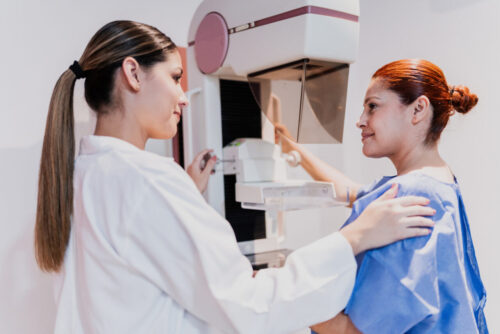Community Health Centers: A Role Model for Addressing Social Needs
August 7, 2019

Getty Images
In the era of accountable care organizations and social determinants of health, the story of community health centers is more relevant than ever.
Long before the social determinants of health became a catchphrase and a rallying cry in healthcare, community health centers (CHCs) were on the case.
For more than 50 years, CHCs have played an integral but often unheralded role in our nation’s healthcare system, delivering neighborhood-based primary care tailored to the unique cultural, social, and health needs of the diverse communities they serve, both urban and rural.
Founded in the 1960s as an antipoverty initiative, CHCs have grown from humble beginnings to serving approximately 28 million patients at 11,000 sites across the U.S. Despite the growth over the years — and periodic threats to their funding — CHCs have remained true to their mission of addressing not only the health of their patients, but a wide range of social conditions including low income, food and housing insecurity, and lack of access to reliable and affordable transportation.
“The purpose [of CHCs] was to provide care in a central location for communities in need,” says Guale Valdez, CEO of Mattapan Community Health Center in Mattapan, Massachusetts. “We’re still doing the same work, since 1972.”
In an era of accountable care organizations and upstream healthcare delivery, the history of CHCs and the lessons and inspiration they offer are more relevant than ever. Healthcare systems of all kinds are moving beyond clinical care alone to connect patients to resources that support food access, housing, employment, transportation, and other social determinants — a broad-based approach to patient care that has echoes in the CHC model.
“We are that health center home for people,” says Joshua Okallo, MD, a family medicine practitioner and physician leader at Manet Community Health Center’s Snug Harbor site in Quincy, Massachusetts, which since 1983 has operated within a deemed historic Quincy Public Housing property, situated within a busy community with close to 650 households. “They know that, no matter what, we’re always there and willing to take on any needs they may have.”
Outposts in the War on Poverty
CHCs as we know them today arose from a demonstration program in President Lyndon Johnson’s War on Poverty. The first two “neighborhood health centers,” as they were called at the time, opened in 1965 under the Office of Economic Opportunity (OEO) in Mound Bayou, Mississippi, and in Boston.
The Boston site, Columbia Point Health Center in Dorchester, is still open today, now called the Geiger Gibson Community Health Center. In 1966, a 34-year-old Edward Kennedy toured the center and, as lore has it, was so impressed with what he saw that it inspired him to introduce an amendment in the Senate that created federal funding to expand health centers nationwide.

Sen. Edward Kennedy played a pivotal role in funding community health centers. Shown here visiting a center in Houston in 1977, Kennedy was a life-long champion of the CHC model. (Bettmann, Getty Images)
The agenda captured in that legislation anticipates many of the top-of-mind topics in healthcare today: equity, access, the social determinants of health. The legislation called for developing “comprehensive health services programs” in areas with “high concentrations of poverty and a marked inadequacy of health services,” and urged that, wherever possible, those health services be combined with “employment, education, social, or other assistance needed by the families and individuals served.” The law even specified programs for the “prevention of narcotic addiction and the rehabilitation of narcotic addicts.”
The federal government funded more than 100 neighborhood health centers in the ensuing decade, Elizabeth Bradley and Lauren Taylor describe in their book, The American Health Care Paradox. Importantly, in 1970, jurisdiction for the health centers passed from Johnson’s OEO to the precursor of the Department of Health and Human Services, which had begun funding its own “community health centers” in a separate program beginning in 1968. Soon, neighborhood health centers and CHCs were combined under a single umbrella.
As the War on Poverty gave way to the Nixon era, funding for CHCs increasingly came under attack. In the mid-’70s, Congress extended funding, but with a key compromise that split “primary” healthcare services (i.e. clinical care) from “supplemental” services, such as case management, interpreter services, and transportation. While this compromise served its purpose by protecting funding for primary services, funding for supplemental services was eroded, and CHCs became increasingly dependent on Medicaid and Medicare reimbursement for medical services.
In the five decades since, federal funding for CHCs has largely enjoyed bipartisan support and has increased steadily. The program faced some threats under Presidents Nixon and Ronald Reagan, but other presidents, both Republican and Democrat, as well as Congress, have moved to enhance and expand it, recognizing that CHCs can provide care in a more economical way than other models.
Community health centers today
CHCs have remained faithful to their original mission of serving their communities. Today, the CHC system includes some 1,400 organizations providing comprehensive care to 28 million patients, and it’s still growing. From 2016 to 2017 alone, health centers added 1.3 million patients and 16,000 staff and opened 600 new sites nationwide, according to the National Association of Community Health Centers (NACHC).
These patients have access to comprehensive primary care services, all well as community resources and services such as trauma counseling, nutrition education and cooking classes, integrated behavioral health services, STI screening, and housing and transportation assistance.
Due to their focus on primary and preventive services and community priorities, CHCs have continued to make valuable contributions to nationwide healthcare goals, such as reducing infant mortality rates, racial disparities in health outcomes, and HIV rates, all while reducing healthcare costs and utilization of inpatient and emergency services.
The CHC model has also evolved, seeing the development of Health Center Controlled Networks (HCCNs), which increase the reach and power of the health centers and create access to specialty care through partnerships with hospitals. Health centers in the HCCN Boston HealthNet, which includes Mattapan CHC and Manet CHC, among others, provided 1.3 million CHC patient visits in 2018. The network also allows for collaboration, referral, and knowledge sharing around population health initiatives and tactics for addressing the social determinants of health.
“One of the things we recognize is we cannot do this job alone. We need partnerships,” says Valdez of the importance of the controlled network, which also connects the CHCs with resources and specialty services at Boston Medical Center (BMC). “We speak as one community instead of 14 individual CHCs.”

The old Mattapan Community Health Center building (Boston Globe, Getty Images) before its 60,000-square-foot replacement had its grand opening in 2012. (See image at the top of the story.)
The new 60,000-square-foot Mattapan CHC, which opened in 2012, is a symbol of the power of these partnerships, says Valdez.
“We were in a very challenging building before,” he recalls. “This building represents what happens when a community comes together. Federal, state, city governments, support from BMC — this is what happens when there’s collaboration.”
Preserving the mission of CHCs
While CHCs and their partnerships have demonstrated their value time and again, keeping their services open to the communities who need them most depends largely on federal budgets that remain a source of ongoing debate.
Two years ago, CHCs were unfunded for nearly six months before Congress reauthorized the Health Center Fund budget in February 2018, and the funding is due to expire again on September 30. Although reauthorization is expected this fall, any uncertainty can be detrimental to health centers, even when the funding ultimately comes through, says Amy Simmons Farber, communications director for the NACHC.
“The instability alone, the threat of instability, can be quite challenging,” she says, noting that doubts about funding can make it more difficult for CHCs to recruit staff and plan for expansion.
“The good news,” Simmons Farber continues, “is that there’s bipartisan momentum behind passing legislation. You have lawmakers who really understand the critical role CHCs play in fighting HIV, responding to natural disasters and the opioid epidemic, and driving healthcare savings.”

House Majority Whip James Clyburn (D-SC) and Sen. Bernie Sanders (I-VT) announce new legislation in March 2019 to expand federal funding for community health centers. (Drew Angerer, Getty Images)
Meanwhile, the providers on the CHC frontlines, who have been through this before, stay focused on the community health center mission: caring for patients and serving communities.
Okallo, the family physician in Quincy, describes Manet as a “touchstone” of the community, noting that in some cases he has cared for three generations of the same families, seeing children grow up to attend college or enter the workforce.
“Some have come for over 30 years,” he says. “Even with different providers, they know people who occupy that seat are there to do their genuine best. They have a sense of trust that their health will be taken seriously, and they’ll be cared for.”


